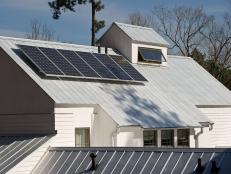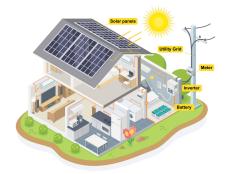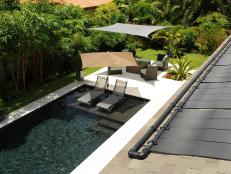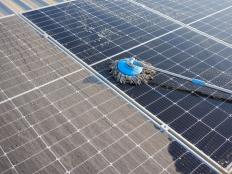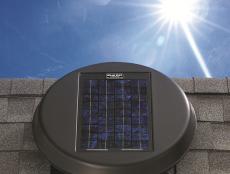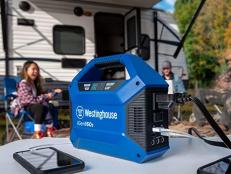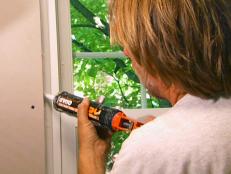Small Steps in Solar Power: Lighting, Generators and More
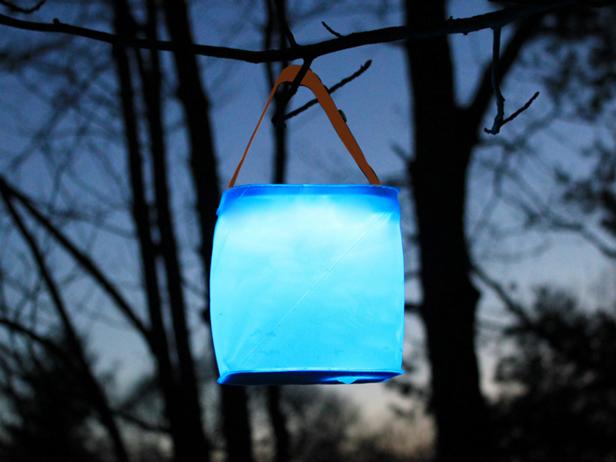
Most people agree collecting free energy from the sun is a great idea, but not everyone is able (or willing) to commit to whole-house rooftop solar systems for their home. But here's a bright side: Many products are available today that allow homeowners to take smaller — but still significant — steps toward solar-powered energy savings.
The best news: Not only will you save money on your electric bills, but many tax incentives are available for these smaller solar products, as well. It all adds up to this renewable energy source finally getting its day in the sun and becoming a popular source for product power. (Check the U.S. Department of Energy Database of State Incentives for Renewables & Efficiency — DSIRE for short — online to find out what incentives your state offers.)
So how should you integrate solar power into your home? Here are some of the more popular solar devices available today:
Solar Generators
Solar generators aren’t going to replace the gasoline-powered behemoths — at least not if you want a generator to do exactly the same as the large gas generators do. They simply don’t have the same power output. A gas generator can serve as a power backup for an entire house; a solar generator can’t do that right now.

That’s not to beat up on solar generators, though, because they have a lot of advantages that big gassy brother does not. First, gas generators should always be used outdoors because of the serious risk of carbon monoxide poisoning. A solar generator is completely clean and can be used anywhere. Also, gas generators, of course, have to have fuel. In a disaster or emergency, that can sometimes be hard to come by. Solar generators obviously only use the power of the sun, so you don’t have to worry about where your power generation fuel is coming from. This can be especially critical for people who have medical devices that require electricity or who need pharmaceuticals like insulin, which must be refrigerated. A solar generator can power a small medical device or a mini-fridge, as well as small electronics like phones, televisions and iPads, all of which you usually want to be able to use inside your home.
Solar Pool Pumps and Filters
Pools and sunshine have a pretty tight-knit relationship, so it makes a lot of sense to convert electrical-powered pool parts to solar energy. And the monthly savings in the utility bill will feel as refreshing as a dip in the pool on a July day: Many pumps and filters can siphon $100 a month out of your pocket, and popular solar pump and filter systems can be had for under $1,000. Do the math: For most pool-popular climates, that adds up to only two seasons before you make back in savings what you spent for the unit.
Solar Security Lights and Other Outdoor Solar Lighting
Motion-sensing security lights keep your house secure against those who would lurk in the shadows, but when the power is out, they can’t do their job. Unless, of course, you have solar-powered security lights. Solar-powered security lights are becoming more and more common as they become more powerful, like this solar-powered motion-sensing floodlight Maxsa Bright from Silicon Solar.

But outdoor solar lighting doesn’t have to just be practical — it can be pretty, as well. Delicate solar string lights can replace plug-in lights in your outdoor decor. Inflatable solar lanterns offer colorful, versatile, water-resistant glow that will float in pools, hang in trees or stand watch on a deck to light the night. And you can line your walkway with pavers and stones that will soak up the sun during the day, then light the way at night.
Solar Attic Fans
While it’s important to make sure your attic area is well-insulated and has heat-barriers, an attic fan is also a major player in cooling your house in warm weather. These rooftop climate warriors push hot air out of your attic space using only sun-powered electricity, keeping your house cooler and lightening the load on your air-conditioning unit. One square foot of free venting for every 300 square feet of attic space is a good rule of thumb, says Xavier Walter, CEO of The Energy Team, a Southampton, N.J., group of energy-efficiency experts and contractors. But why go solar? It’s all in the pocketbook. A solar attic fan costs nothing to operate, while an electric attic fan can run constantly during the summer months.
This basically makes the solar attic fan an MVP of the solar powered players: Not only does it cost you nothing to operate and keep you more comfortable, it turns the tables on the sun's heat-filled rays, using them to help your home chill out.






